You can make your old lights smart without rewiring by using several plug-and-play options. Install smart bulbs that fit standard sockets, add retrofit switches that replace existing wall plates, or hide relay modules behind current switches. For rental properties, try battery-powered fixtures or smart plugs for lamps. All these solutions connect to your smartphone and voice assistants like Alexa or Google Home. The following solutions require zero electrical expertise to transform your lighting experience.
Plug-and-Play Smart Bulbs: The Simplest Upgrade Path

Why struggle with complex smart home upgrades when the solution is as simple as changing a lightbulb? Smart bulbs transform your existing fixtures into intelligent lighting systems without any electrical work. Just screw them into standard E26/E27 sockets, connect to your home’s Wi-Fi through a smartphone app, and you’re done.
You’ll instantly gain wireless control over your lighting from anywhere. There’s no need to hire an electrician or modify your home’s wiring—these bulbs work with your existing setup. They’re compatible with voice assistants like Alexa, Google, and Siri, allowing you to control lights hands-free. You can even group multiple bulbs to control entire rooms with a single command. These energy-efficient options consume 75% less energy compared to traditional bulbs while delivering the same brightness. This plug-and-play approach makes smart lighting accessible to everyone, regardless of technical expertise.
Retrofit Smart Switches for Traditional Wall Control
While smart bulbs offer incredible simplicity, many homeowners prefer maintaining traditional wall controls for their lighting. Retrofitting smart switches provides this familiar control method while adding modern functionality.
Before installation, determine the switch type you need—single, two-row, or three-hole—and analyze your existing wiring. You’ll need to identify load, ground, and especially neutral wires, as most smart switches require them.
Always turn off power at the circuit breaker and test with a voltage tester before working.
Options like Gira’s System 3000 and KNX RF technology allow for wireless retrofitting without changing your home’s wiring. These systems can control lighting, blinds, and heating while integrating with larger home automation setups.
For safety and proper installation, consider hiring a professional electrician, especially if you’re uncertain about your wiring configuration.
Behind-the-Scene Relay Modules for Invisible Upgrades
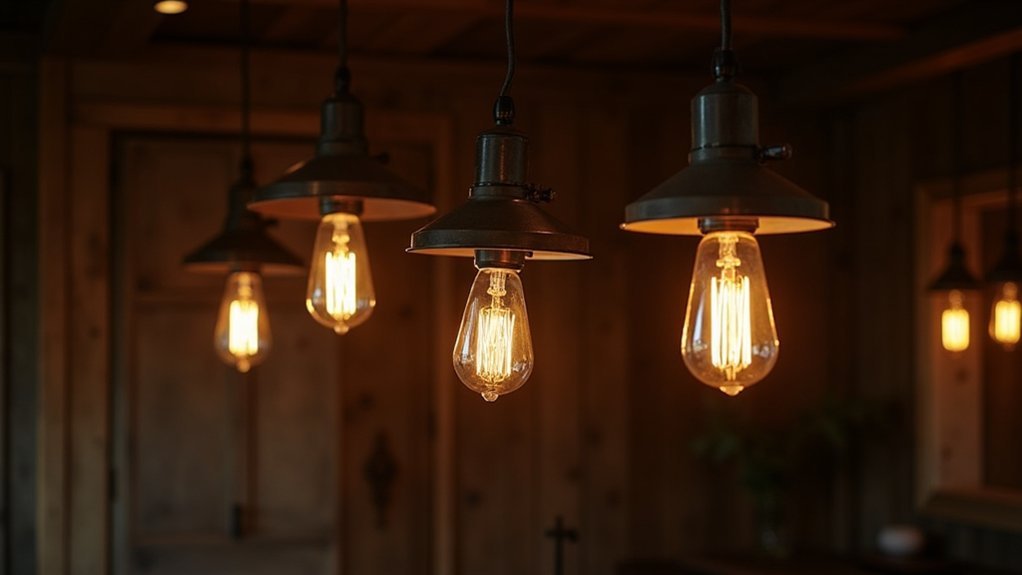
For homeowners who prefer preserving their traditional switch aesthetics but still desire smart home functionality, behind-the-scene relay modules offer an elegant solution.
These compact devices install directly behind existing wall switches or in ceiling boxes, requiring no visible changes to your décor.
You’ll maintain manual control while gaining app access, voice commands, and automation capabilities.
Most modules support Wi-Fi, Zigbee, or Matter protocols and integrate with popular ecosystems like Alexa and Google Home.
With load ratings up to 16A and voltage compatibility from 120-240VAC, they’re suitable for lights, fans, and motorized blinds.
Products like Sonoff MINI, Aqara Dual Relay, and MOES modules range from €6-€26, depending on features.
Though installation requires basic electrical knowledge, these hidden upgrades deliver smart control without compromising your home’s original look. The TOPGREENER Wi-Fi relay module allows homeowners to create customized scenes and schedules for enhanced security and convenience.
Battery-Powered Smart Lighting Solutions for Renters
Renting doesn’t mean you can’t enjoy the benefits of smart lighting, thanks to battery-powered solutions that require zero permanent modifications.
These portable fixtures attach with adhesive or magnetic mounts and can follow you from apartment to apartment.
Installation is remarkably simple—just peel, stick, and enjoy. Most options use rechargeable batteries via USB-C or standard AA/AAA batteries, eliminating constant replacement costs. Many modern options include three color temperatures and dimmable settings to create your perfect ambiance.
For renters seeking smart illumination, consider these popular options:
- Wireless pendant lights – Elegant overhead lighting without ceiling wiring
- Under-cabinet puck lights – Brighten countertops with a simple tap
- Smart motion-sensing sconces – Stylish wall lighting with hands-free convenience
- Decorative string lights – Create ambiance with app-controlled effects
Hub-Based Control Systems for Unified Smart Lighting
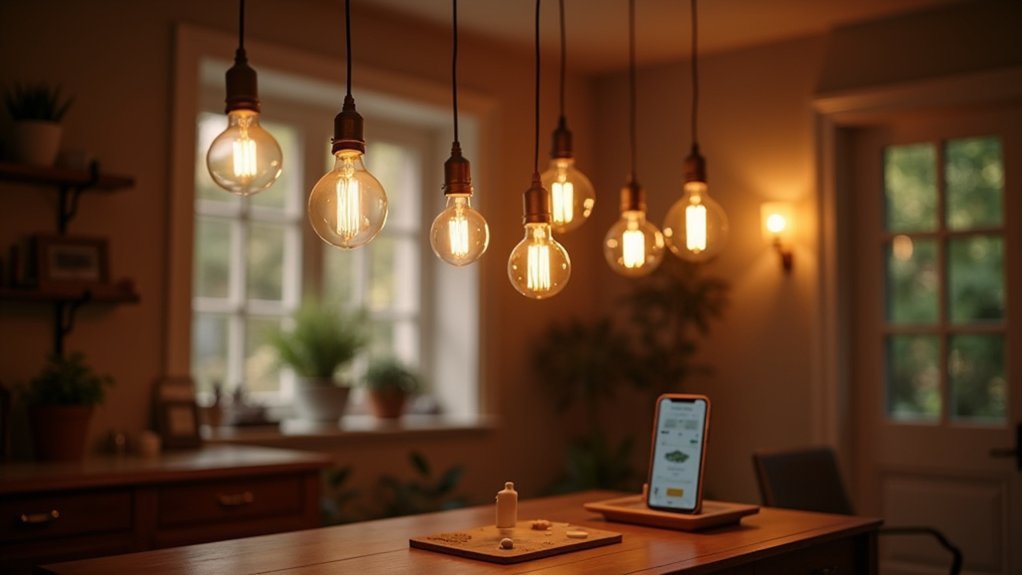
A smart hub serves as the command center for your entire lighting ecosystem, allowing you to control all your devices from one interface.
You’ll benefit from centralized management that translates between different wireless protocols, enabling devices that wouldn’t normally communicate to work together seamlessly.
This translation capability means you can mix and match lighting products from various manufacturers while maintaining unified control through a single app or voice command. The hub connects directly to your router and operates on a Clear Connect technology frequency separate from Wi-Fi, ensuring reliable performance even when your internet connection is down.
Hub-Based Control Centralization
While traditional lighting systems require manual operation of individual switches, hub-based control systems revolutionize how you manage your home’s illumination by centralizing all lighting controls into a single command center.
Your smart hub connects to all lighting components wirelessly, eliminating the need for complex rewiring of your existing fixtures.
With a centralized hub, you’ll enjoy:
- Ultra-fast response times with dedicated communication channels that outperform standalone Wi-Fi bulbs
- Unified control through a single app interface that manages all connected lights simultaneously
- Enhanced automation capabilities for creating synchronized lighting scenes across multiple rooms
- Seamless integration with voice assistants like Alexa and Google Assistant for hands-free operation
This centralization simplifies both installation and daily use while providing more reliable performance than individual smart bulbs alone. The centralized control system also contributes to improved home security as it can simulate human presence when you’re away, significantly reducing the risk of break-ins.
Protocol Translation Capabilities
Smart hubs equipped with protocol translation capabilities serve as multilingual interpreters for your lighting ecosystem, enabling seamless communication between devices that would otherwise speak incompatible languages.
These translators convert signals between protocols like ZigBee, Wi-Fi, DALI, and DMX, allowing your legacy fixtures to interact with modern control systems.
When you install a protocol translator, you’re bridging the gap between different generations of lighting technology without rewiring. Your existing DALI or DMX infrastructure can now respond to commands from wireless protocols like Bluetooth or Z-Wave.
The translators handle differences in addressing schemes and command sets behind the scenes, while LED indicators provide real-time status information for troubleshooting. The compact design requires only 5 DIN-Rail modules for installation, minimizing space requirements in electrical panels.
Most devices offer flexible configuration options via USB or software interfaces, letting you customize the integration to your specific network needs.
Voice Control Integration Without Touching Your Wiring
Thanks to modern innovation, you can now modernize your home lighting with voice control without ever disturbing your existing wiring.
Compatible with Amazon Alexa, Google Assistant, and Apple HomeKit, today’s smart lighting solutions transform how you interact with your home’s ambiance.
These voice-controlled systems offer:
- Hands-free operation ideal for those with mobility challenges or when your arms are full
- Custom scene creation for different activities or times of day
- Automated routines like gradual morning brightening or evening dimming
- Energy usage monitoring and optimization through smart scheduling
Solutions like magnetic switch overlays and smart plugs eliminate the need for an electrician, while multi-platform compatibility guarantees your system works regardless of which voice assistant you prefer. These solutions are perfect for apartment dwellers and renters who want smart functionality without making permanent changes to their living spaces.
Motion Sensors and Automation Triggers for Hands-Free Lighting
You can transform your old lighting system into a responsive, hands-free experience by installing motion sensors that trigger lights automatically when you enter a room.
These retrofit solutions work with your existing fixtures through wireless connectivity to smart bulbs or plugs, eliminating the need for complex rewiring projects.
Creating trigger zones throughout your home establishes intuitive lighting paths that follow your movement, saving energy while providing convenience exactly when and where you need illumination. The Philips Hue Motion Sensor enhances home security by illuminating entry points and deterring potential intruders when movement is detected.
Motion Sensors and Automation Triggers for Hands-Free Lighting
When convenience meets efficiency, motion sensors transform ordinary lighting into a hands-free experience that responds to your presence.
These versatile devices can be placed anywhere using magnetic mounts or screws, with many running on batteries to eliminate complex wiring.
Your lighting becomes truly intelligent when connected to smart home systems through hubs or bridges, enabling:
- Custom timing rules that activate lights only during specific hours
- Scene creation that triggers multiple lights simultaneously when motion is detected
- Integration with voice assistants like Alexa and Google Home
- Automatic shutoff after periods of inactivity, saving energy
With wide-angle coverage of up to 120°, motion sensors not only provide convenience but also enhance security by automatically illuminating spaces when someone approaches, deterring potential intruders. Advanced sensors like the Everything Presence One can detect even small movements for consistent lighting control in areas like kitchens and offices.
Retrofit Motion Detection Solutions
Modernizing older lighting fixtures doesn’t require complete replacement, as retrofit motion detection solutions offer a practical path to hands-free convenience without sacrificing cherished designs.
You can choose from occupancy sensors that automatically control lights or vacancy sensors that turn off after you leave.
For different spaces, consider PIR ceiling sensors for larger areas or ultrasonic sensors for confined spaces with obstructions. High bay sensors work effectively in spaces with ceilings exceeding 20 feet. Dual-technology sensors provide superior reliability by requiring both PIR and ultrasonic detection before activation.
Kits like the EB1000 EYE BEAM convert existing fixtures without rewiring, preserving aesthetic integrity while adding smart functionality.
These retrofits not only enhance convenience but deliver energy savings by eliminating unnecessary usage. You’ll benefit from lower utility bills, extended bulb life, and possible energy rebates in some regions.
Trigger Zones and Paths
Creating strategic trigger zones transforms ordinary lighting into an intelligent, hands-free experience that responds naturally to your movements.
Position motion sensors to cover critical paths like entryways, stairs, and hallways with their typical 120° coverage and 20-foot range. For ideal performance, define overlapping zones that guarantee continuous illumination as you move through your home.
- Entryway Setup – Place sensors to detect arrival, automatically illuminating your path inside
- Stairway Safety – Install sensors at both top and bottom for continuous lighting on steps
- Hallway Navigation – Create a sequence of trigger zones for seamless movement between rooms
- Bathroom Convenience – Position sensors for immediate lighting without fumbling for switches
Adjust sensitivity settings to prevent false triggers from pets or passing cars while maintaining responsive activation when you need it. Consider implementing LUX level conditions to automatically adjust brightness based on ambient light, ensuring appropriate illumination regardless of time of day.
Smart Plugs and Socket Adapters for Lamp Intelligence
For homeowners seeking to introduce smart capabilities without replacing their existing lamps, smart plugs and socket adapters offer an elegant solution.
These devices transform standard outlets and fixtures into remotely controllable lighting with minimal effort. Simply plug in or screw the adapter into your existing lamp, and you’ll gain immediate control via smartphone apps or voice assistants like Alexa and Google Home. Popular socket adapters include Project Source models that come in various colors and wattage capacities.
No rewiring required. Most adapters work with standard E26/E27 bulbs, whether LED or CFL.
You’ll enjoy scheduling capabilities, remote control, and integration with wider smart home ecosystems. Some models even include motion sensors or additional outlets for cameras.
While most support non-dimmable bulbs only, they provide an affordable entry point into smart lighting without replacing your cherished fixtures.
Energy Monitoring and Efficiency Benefits of Smart Retrofits
While traditional lighting systems operate blindly, smart retrofits transform old fixtures into data-rich energy management tools that actively monitor and optimize electricity usage. You’ll reduce energy consumption by up to 75% while gaining valuable insights into your lighting patterns.
These retrofits deliver substantial benefits:
Smart lighting retrofits offer concrete advantages that transform your building’s efficiency, intelligence, and bottom line.
- Real-time monitoring identifies inefficiencies immediately, allowing you to adjust settings remotely without physical intervention.
- Automated controls respond to occupancy and ambient light, eliminating wasted energy when rooms are vacant. Advanced photodetectors and sensors can reduce energy use by 20% to 40% by automatically adjusting brightness based on activity levels.
- Data analytics reveal usage patterns that help you optimize lighting strategies and predict maintenance needs.
- Economic advantages include lower utility bills, reduced maintenance costs, and potential qualification for government energy efficiency incentives.
Smart retrofits don’t just save energy—they transform how you understand and manage your lighting ecosystem.
Creating Scenes and Schedules With Existing Fixtures
Your existing light fixtures harbor untapped potential beyond simple energy efficiency. By installing smart bulbs or retrofit modules, you’ll transform conventional lighting into programmable experiences without rewiring.
You can create personalized scenes for different activities—dimming lights for movie night or brightening them for reading—all controllable through your smartphone. Schedule these scenes to activate automatically at sunset, bedtime, or any time that suits your routine.
Smart hubs connect your retrofitted fixtures to create whole-home lighting coordination, extending control range and enabling voice commands. If you encounter technical issues, dedicated help centers are available to assist with troubleshooting common problems with your smart lighting setup.
For advanced users, automation platforms like IFTTT can trigger your lights based on conditions like weather changes or your location. Third-party apps expand these capabilities further with music synchronization and dynamic effects.
DIY Installation Steps for Non-Electricians
Transforming old light fixtures into smart devices doesn’t require an electrician’s license or extensive rewiring knowledge. With the right tools and safety precautions, you can install smart relays behind existing switches in just a few steps.
- Safety first – Always turn off power at the breaker box and verify with a voltage tester before touching any wires.
- Identify wiring – Gently remove the old switch to locate line, load, and ground wires without disconnecting them unnecessarily.
- Connect smartly – Attach the relay’s input wires to existing connections following manufacturer instructions, maintaining proper polarity.
- Test thoroughly – After securing all connections, restore power and confirm operation through both physical switch and app control.
Sonoff relays are particularly useful because they can function without a neutral wire, making them perfect for older homes with limited wiring options.
For rental properties or difficult wiring situations, battery-powered smart lights offer a no-wiring alternative that’s equally effective.
Frequently Asked Questions
Can Smart Lighting Work During Internet or Power Outages?
During internet outages, your smart lights typically maintain their current state. However, during power outages, they’ll lose functionality unless you’ve connected them to a battery backup system like a UPS.
How Do Smart Retrofits Affect Home Insurance Policies?
You’ll often receive insurance premium discounts when you install smart security, fire, and water leak detection devices. They reduce claim risks, making insurers view your home as safer and worthy of better policy terms.
Are Retrofit Solutions Compatible With Three-Way Switch Configurations?
Yes, many retrofit solutions work with three-way switches. You’ll find brands like Yoswit and Deako specifically designed to support three-way configurations, allowing you to control lights from multiple locations without rewiring.
Can Smart Lighting Be Programmed to Simulate Occupancy When Traveling?
Yes, you can program smart lighting to simulate occupancy while traveling. Most systems offer scheduling with randomization features that mimic real human patterns by varying when lights turn on and off throughout your home.
What’s the Average Lifespan Difference Between Smart and Traditional Lighting Components?
You’ll find smart LED bulbs lasting 15,000-50,000 hours compared to traditional incandescents at 1,000-2,000 hours. That’s 10-25 times longer lifespan, saving you frequent replacements and maintenance costs over time.
In Summary
You don’t need to rewire your home to enjoy smart lighting benefits. Whether you choose smart bulbs, retrofit switches, or plug-in solutions, you’ll transform your existing fixtures with minimal effort. Start small with a single lamp or go all-in with a whole-home system. With today’s user-friendly options, you’re just a few simple steps away from voice control, scheduling, and automated lighting scenes.


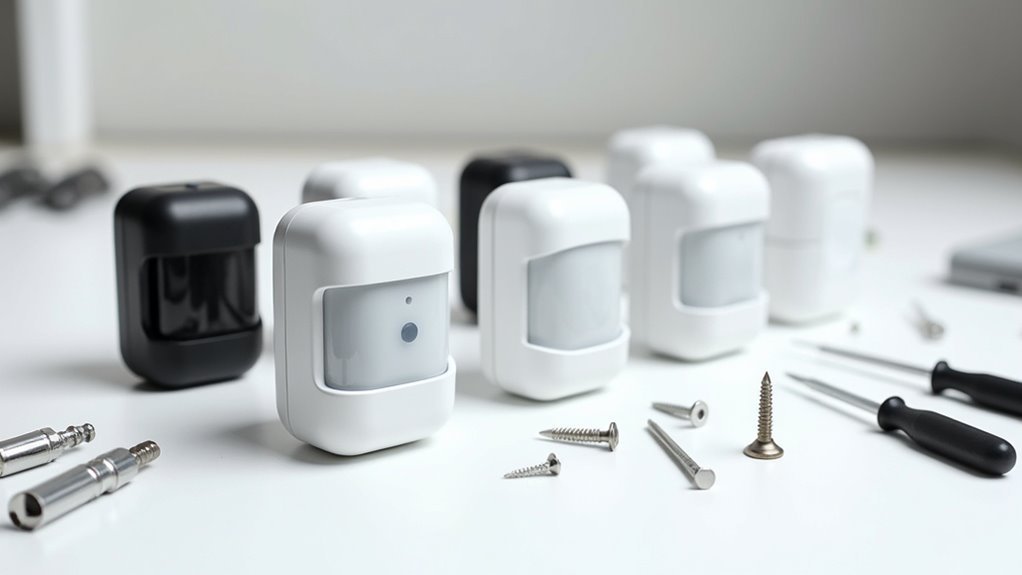
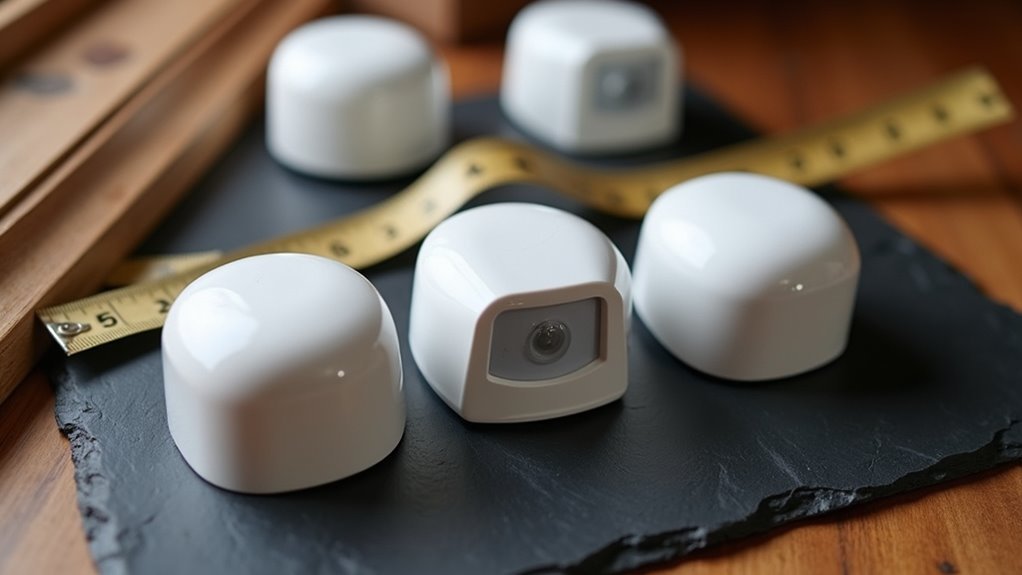
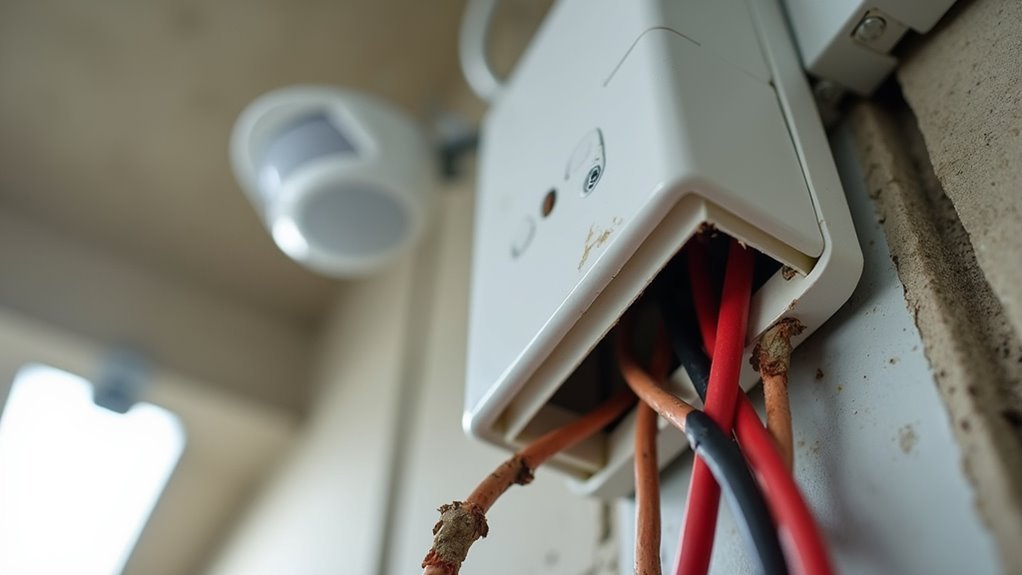
Leave a Reply